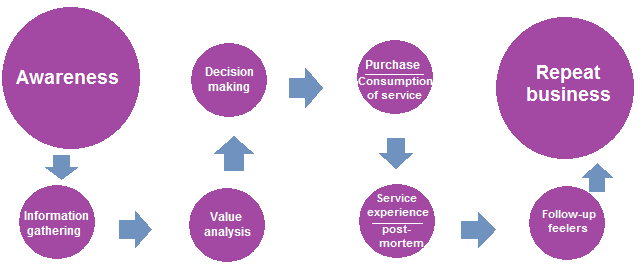 Hospitals are learning how today’s patients are so different from those just 20 years, or even 10 years ago. With the internet and its boom in information sources, with medical tourism bringing patients in from unfamiliar places and with unfamiliar demands, the customer – or the patient – can no longer be taken for granted.
Hospitals are learning how today’s patients are so different from those just 20 years, or even 10 years ago. With the internet and its boom in information sources, with medical tourism bringing patients in from unfamiliar places and with unfamiliar demands, the customer – or the patient – can no longer be taken for granted.
Given the dynamic nature of service and the changing competitive landscape, health care providers especially in popular medical destinations are having to deal with a game changing dynamic.
One of the responses that hospitals are using is to focus on customer service. Here is one way of understanding what customer service is and how to implement it in a hospital setting.
 A service ‘performance’, if one has to call it that, consists of many sub-experiences or touch points for the customer, that is, the patient. A useful technique for a deeper understanding of customer perspectives is the customer touch point analysis. The customer touch map is a useful illustration by which to view the customer life cycle.
A service ‘performance’, if one has to call it that, consists of many sub-experiences or touch points for the customer, that is, the patient. A useful technique for a deeper understanding of customer perspectives is the customer touch point analysis. The customer touch map is a useful illustration by which to view the customer life cycle.
Customer service is not only for the Customer Service Department. Customer service needs to be implemented by customer service “captains” at every patient touch point and marker.
The systemic management of customer service markers is a challenge which must be attempted with focused effort backed by sincere commitment. I would like to end this article with a macro framework of the process.
Patient focused customer service task force
Hospitals nowadays are quite familiar with different quality system implementation processes. This suggests a framework for implementing an integrated customer service program.
As with any implementation process, a task force needs to be created. The transformation agenda would be well served through dual leadership of a Customer Service Planner and an Experience Architect. Together they must create the blueprint for a wholesome pleasant experience for the patient.
We start by trying to stimulate the perceptive faculties of the task force. Ideas and concepts need to be centrifuged around a central motif. With the entire rank and file acting as process collaborators the service markers should begin to take shape. A word of caution for the customer service “captains”: the average patient is unlikely to have the detective skills of a Sherlock Holmes, so don’t make the touch points hard to observe or to access.
Patient panel
The next step is to form a representative patient panel and expose them to the service markers under review. The responses of the panel (call it an experience audit if you wish) need to be recorded as meticulously as possible to collate the sensory impression data.
Thereafter it is the job of a specialist (the Experience Architect) to analyze the markers for all they are worth (impact, financial implications and priority). Some may be eliminated, modified, massaged or layered to achieve the target perception. The cumulative effect of all the markers should result in a positive aggregate score for the hospital.
Periodic and relevant consumer research and training would equip all levels of employees to keep a tab on the functional and emotional needs of the patients.
Patient perception management promises to be a new age marketing tool in a hospital – the marketing department can drive home this exciting concept towards greater customer loyalty and patronage.
By Sandip Chaudhuri
Manager – Business Development| Corporate Communications
Genesis Hospital, Kolkata
Also by Sandip Chaudhuri:

 >
>
Pingback: The other dimension of customer service · MTQUA | Medical tourism quality, safety and patient care best practice.
Pingback: Hospital customer service doesn’t guarantee satisfaction · MTQUA | Medical tourism quality, safety and patient care best practice.